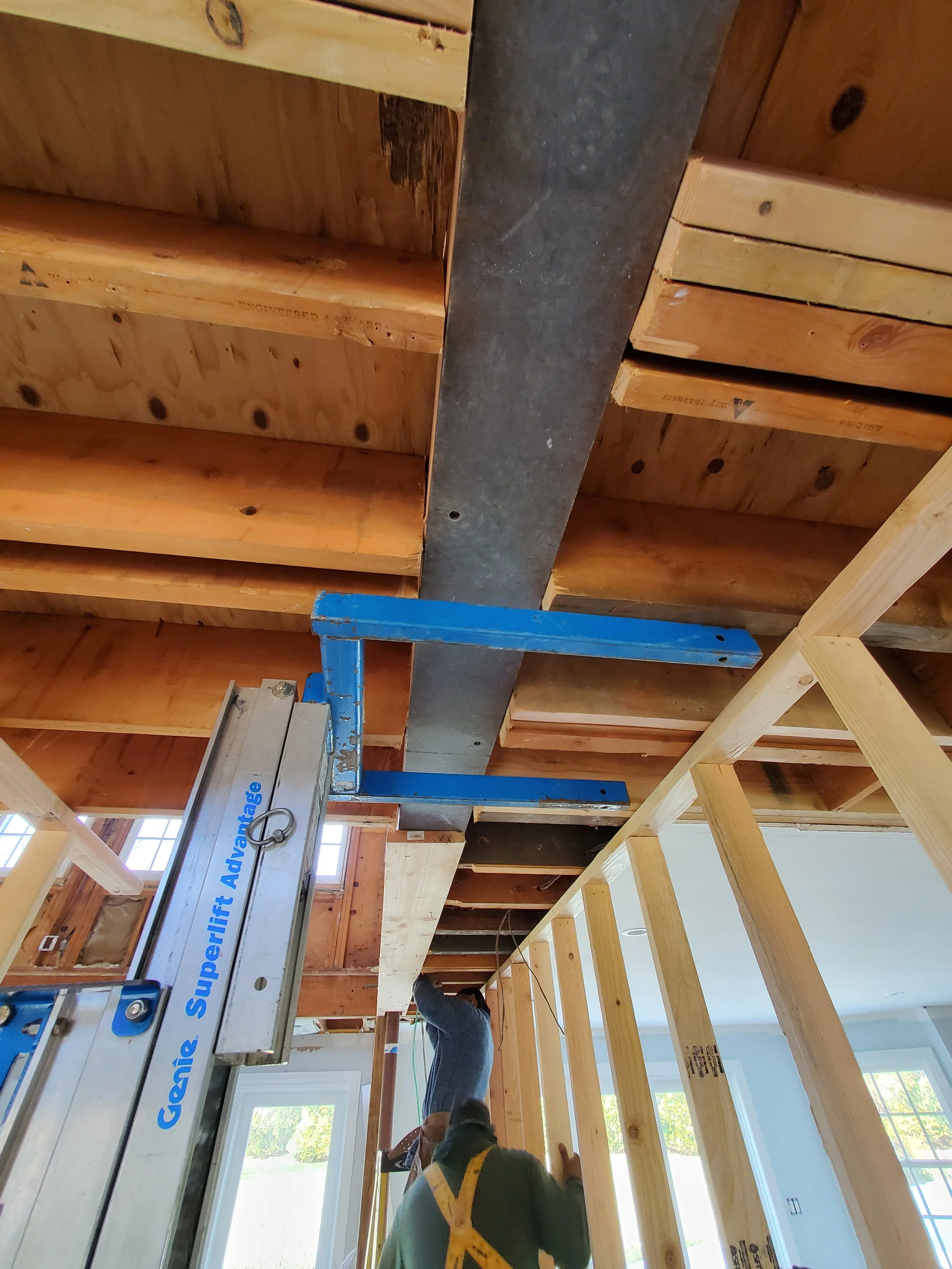The Vital Role of Structural Engineers in Planning New Construction Homes: An In-Depth Look at Their Work
Introduction
Building a New Construction home is an exciting endeavor, filled with dreams and possibilities. Behind every successful new construction project lies the indispensable expertise of a structural engineer. Their role in the planning stage is critical, ensuring the safety, stability, and longevity of the structure. In this blog, we will explore the importance of structural engineers in new construction homes, and large home renovation projects highlighting the various aspects of their work that contribute to the successful completion of a project.
Ensuring Structural Integrity
I-Beam Instalaltion at Greenwich CT
One of the primary responsibilities of a structural engineer is to ensure the structural integrity of the building. They analyze the architectural plans and create a robust framework that can withstand the anticipated loads, forces, and environmental conditions. By utilizing their knowledge of physics, materials science, and engineering principles, they design and specify the appropriate structural elements, such as beams, columns, and foundations.
Structural engineers conduct thorough assessments of the site to evaluate soil conditions, assess potential risks, and determine the most suitable foundation type for the construction. This evaluation is crucial, as it ensures the stability of the building and prevents future issues such as settling, shifting, or collapse.
Collaboration with Architects and Designers (word count: 200)
Choosing the right Architect/Structural Engineer team is crucial for your new construction project
Structural engineers work closely with architects and designers throughout the planning process. They provide valuable insights and expertise to ensure that the proposed design can be successfully translated into a structurally sound building. By collaborating from the early stages, they can address any potential design challenges, propose effective solutions, and optimize the construction process.
By partnering with architects, structural engineers can strike a balance between aesthetics and structural integrity. They find innovative ways to incorporate architectural elements while maintaining the stability of the building. Their input is crucial in achieving both visual appeal and long-term safety.
Compliance with Building Codes and Regulations
Make sure to follow at building codes and regulations in the town/city where you're building your new home
Building codes and regulations are established to guarantee the safety and well-being of occupants. Structural engineers possess an in-depth understanding of these codes and ensure that the construction plans comply with them. Their knowledge helps avoid legal complications and ensures that the building meets all the necessary requirements.
Structural engineers stay up-to-date with the latest codes and regulations, enabling them to incorporate best practices and industry standards into their designs. By adhering to these guidelines, they create a secure and reliable structure that will withstand the test of time.
Incorporating Sustainable Practices
In an era of growing environmental awareness, structural engineers play a significant role in incorporating sustainable practices into new construction homes. They assess the environmental impact of the building, exploring ways to minimize resource consumption, increase energy efficiency, and reduce waste.
From designing energy-efficient insulation systems to incorporating renewable energy sources, structural engineers contribute to creating eco-friendly homes. By implementing sustainable strategies, they not only reduce the carbon footprint but also improve the overall efficiency and affordability of the building in the long run.
Risk Assessment and Mitigation
Structural engineers meticulously analyze the potential risks associated with the construction project. They evaluate factors such as natural disasters, extreme weather conditions, and geographical considerations. By identifying these risks, they develop effective mitigation strategies to safeguard the structure and its occupants.
Through advanced modeling techniques and simulations, structural engineers can assess the building's response to various hazards. This analysis enables them to make informed decisions about the construction materials, structural design, and overall safety measures.
Cost
The cost of hiring a structural engineer for new construction home plans can vary depending on several factors such as the complexity of the project, the size of the home, and the location. In general, structural engineers charge either an hourly rate or a fixed fee for their services.
Hourly rates for structural engineers can range from $100 to $200 or more per hour, depending on the engineer's experience and reputation. Keep in mind that structural engineering services for new construction typically involve multiple hours of work, including site visits, calculations, analysis, and the preparation of detailed plans and reports.
Alternatively, some structural engineers may offer a fixed fee for their services. This fee is usually based on the size and complexity of the project. For a new construction home, the fixed fee can range from a few thousand dollars to several tens of thousands of dollars, again depending on the factors mentioned earlier.
It's important to note that the cost of the structural engineer's services is typically just one component of the overall construction budget. Other expenses, such as architectural design, permits, materials, and construction labor, should also be taken into account when planning for the total cost of building a new home.
Conclusion
The significance of structural engineers in planning new construction homes cannot be overstated. They bring expertise, innovation, and a deep understanding of engineering principles to the table. Their work ensures the structural integrity of the building, compliance with regulations, collaboration with architects, incorporation of sustainable practices,




